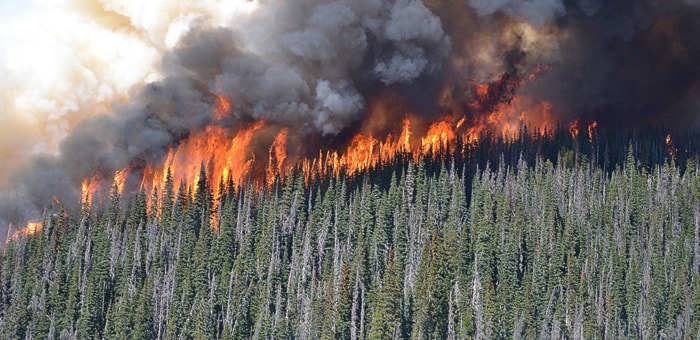Disagreements persist on the extent of humanityB��Ԫ������ַ�s role in the current changes to B.C.B��Ԫ������ַ�s climate, and our ability to influence it, as many readers have told me in the past week.
But almost everyone seems to agree that growing more and healthier forests is a good strategy. I would add that harvesting and building with wood preserves its captured carbon, a fact not much discussed in emotional appeals against logging.

The B.C. government is finally spending some money on community fuel load removal projects this year, after an initial flurry following the Kelowna fires of 2003 faded in hard times. But the effects of decades of fire suppression in a fire-dependent forest system remain, as northern B.C. and Alberta are showing us again.
There is some positive news here. A Victoria-based government research team has published a study that calculates B.C.B��Ԫ������ַ�s pine beetle-damaged forests are regenerating more quickly than expected.
Warmer temperatures, increased precipitation and the B��Ԫ������ַ�fertilizer effectB��Ԫ������ַ� of more carbon dioxide in the atmosphere are factors.
B��Ԫ������ַ�By 2020, the enhanced growth due to climate change and increased CO2 more than compensates for the carbon loss from dead, rotting trees,B��Ԫ������ַ� said lead researcher Vivek Arora of the Canadian Centre for Modeling and Analysis.
This recovery even overcomes the projected increase in forest fire loss that comes with gradually increasing temperatures and drier periods.
The federal government is still working on its plan to meet greenhouse gas reduction targets agreed to in Paris last year. But the forest industry has stepped up with its own goal.
I spoke last week with Derek Nighbor, president of the Forest Products Association of Canada, after he announced his industryB��Ԫ������ַ�s B��Ԫ������ַ�30 by 30 Climate Change Challenge.B��Ԫ������ַ�
ThatB��Ԫ������ַ�s a goal to reduce the industryB��Ԫ������ַ�s net carbon emissions by 30 megatonnes a year by 2030. That would be 13 per cent of the Canadian government emission target.
One of the main strategies is salvage harvesting and developing more products that use wood.
B��Ԫ������ַ�ItB��Ԫ������ַ�s basically trying to use every part of the tree,B��Ԫ������ַ� Nighbor said. B��Ԫ������ַ�In forest operations right now, this is where we see a big part of the opportunity. Instead of the residual branches and whatnot just being left aside and slashing and burning, bring more of that out and turn it into something.B��Ԫ������ַ�
That something might be a console in a luxury car constructed with wood fibre, or an 18-storey wood student residence building planned for the University of B.C.
The other is improving forest growth. Logging operations have long been required to replant areas they cut, not just in B.C. but across Canada.
Another way to improve forest carbon capture is with more productive species, with genetic techniques that increase resiliency as well as wood mass.
A background paper from the B.C. forests ministry responds to common misconceptions about forest carbon, including the idea that logging should be stopped to maximize storage.
B��Ԫ������ַ�Maximizing carbon storage in the ecosystem would make sense only if society stopped building new homes, acquiring new furniture and consuming in general,B��Ԫ������ַ� it says.
B��Ԫ������ַ�If the flow of forest products stops, society will turn to other products with higher greenhouse gas footprints, e.g. plastics, metal or concrete. In addition, if harvesting stopped and we continued to suppress natural disturbances, there is increased potential for larger catastrophic disturbances in the future.B��Ԫ������ַ�
If Canada wants to make a bigger contribution to reducing greenhouse gases, forests are a good area to focus on. At 348 million hectares from the B.C. coast to Newfoundland, they represent nine per cent of the worldB��Ԫ������ַ�s forests.
Tom Fletcher is B.C. legislature reporter and columnist for Black Press. Email: tfletcher@blackpress.ca Twitter: @tomfletcherbc



